A Chinese robotics company releases a movie in which a humanoid robot wearing sneakers runs through the Gobi Desert

Born to run! Sneaker-wearing STAR1 navigates Gobi Desert with ease - YouTube
Watch: Sneaker-wearing humanoid beats barefoot bot on Gobi fun run
https://newatlas.com/ai-humanoids/robot-era-star1-humanoid-gobi/
Chinese scientists build fastest humanoid robot in the world — it can run at 8 mph | Live Science
https://www.livescience.com/technology/robotics/chinese-scientists-build-fastest-humanoid-robot-in-the-world-watch-it-run-across-the-gobi-desert
Developed by Robot Era, STAR1 is a bipedal robot that is 5 feet 7 inches tall and weighs 143 pounds, roughly the same size and weight as a human.

In a demo video shot by Robot Era in September 2024, you can see STAR1 running on the sands, grasslands, and paved roads of the Gobi Desert.

Wearing sneakers just like humans, STAR1 runs effortlessly up sandy slopes.

The Unitree H1 did not have both feet off the ground at any point during the run, so strictly speaking it cannot be said to have been 'running.' On the other hand, the STAR1 had moments when both feet were completely off the ground.

STAR1 runs barefoot through the Gobi Desert. His running posture is a little unique, with his back stretched straight up and both feet thrust forward.

STAR1 is equipped with a precision
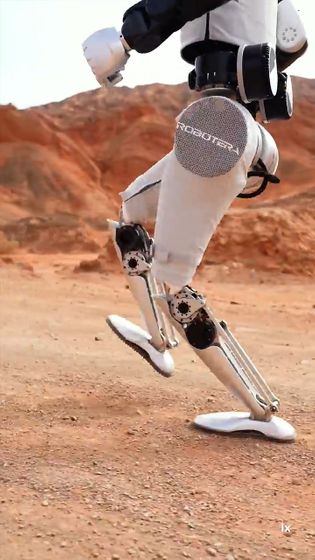
Robot Era explains, 'Controlling a robot's limbs and dynamic center of gravity is essential to enable autonomous movement on rough terrain. For example, traversing soft or uneven surfaces found in terrain like
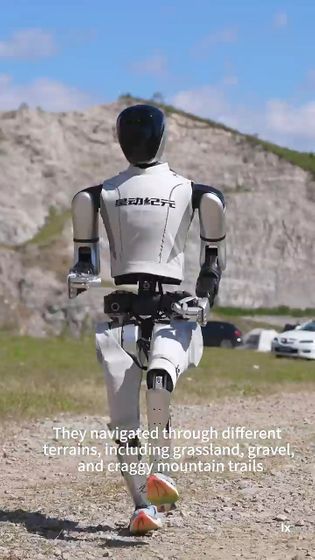
In the demo movie, Robot Era prepared two STAR1s and ran them in the Gobi Desert, one in a barefoot state and one in a sneaker-wearing state.
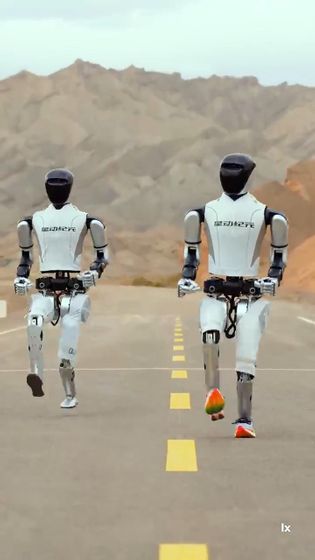
The sneakered STAR1 ran faster than the barefoot STAR1, reaching a maximum speed of 8 miles per hour for 34 minutes.

STAR1 also comes equipped with AI computing power with up to 275
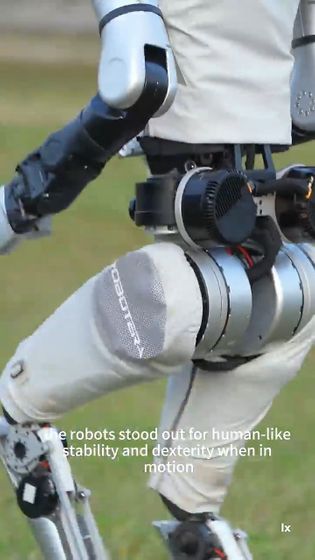
STAR1 is trained with an end-to-end neural network by integrating AI and large-scale language models, so it can quickly learn new skills and adapt to different tasks. Robot Era said, 'This versatility allows it to switch between three walking modes: running, walking, and jumping, even when faced with different terrains such as roads, grass, deserts, and uneven surfaces.'
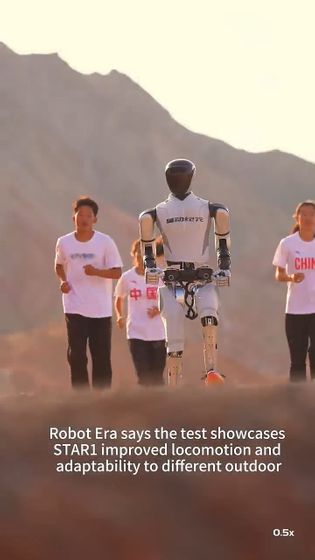
Related Posts:







